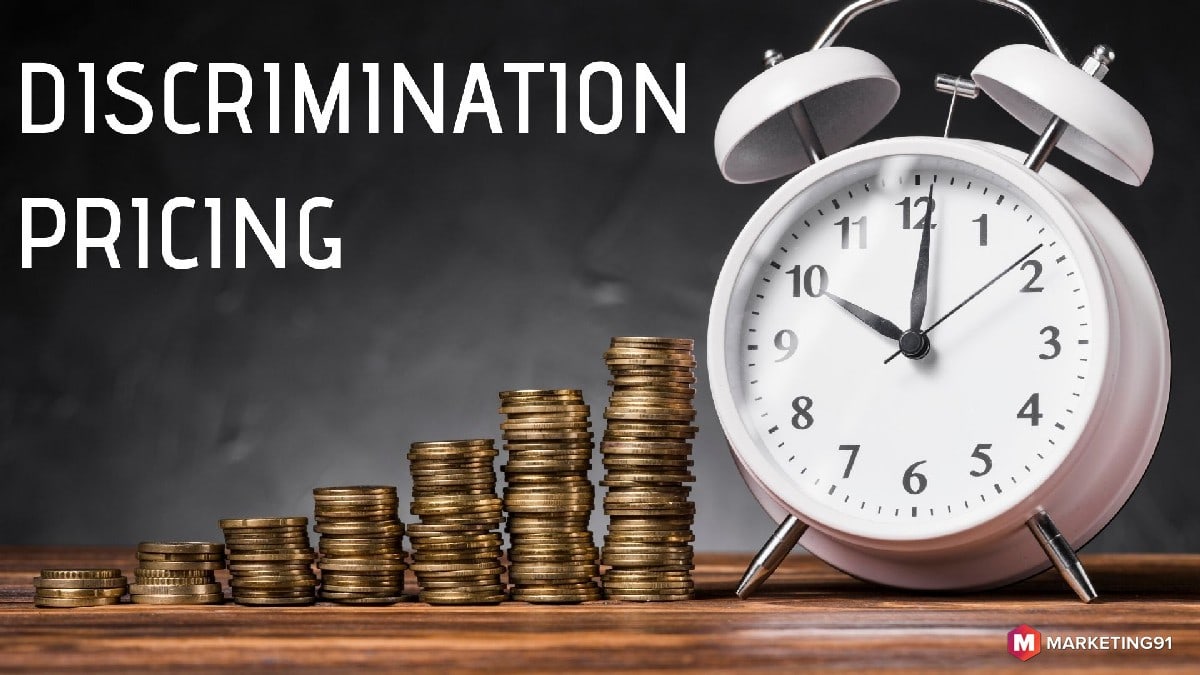
Pricing - Setting the price
Pricing
In the narrowest sense, price is the amount of money charged for a product or service. More broadly, price is the sum of all the values that consumers exchange for the benefits of having or using the product or service.
PRICE – The amt of money charged for a product or service, or the sum of the values that consumers exchange for the benefits of having or using the product or service.
“One can define price as that which people have to forego in order to acquire a product or service.” What does a buyer think? To a buyer, price is the value placed on what is exchanged. Something of value – usually purchasing power – is exchanged for satisfaction or utility. Purchasing power depends on a buyer’s income, credit, and wealth.
Buyers’ concern about price is related to their expectations about the satisfaction or utility associated with a product. Buyers must decide whether the utility gained in an exchange is worth the purchasing power sacrificed. Different terms can be used to describe price for different forms of exchange, (rent, premium, toll, retainer, fee, interest, etc.).
Historically, price has been the major factor affecting buyer choice. This is still true in poorer nations, among poorer groups and with commodity products. However, non-price factors have become more important in buyer-choice behavior in recent decades.
Price is also one of the most flexible elements of the marketing mix. Do you agree ? Unlike product features and channel commitments, price can be changed very quickly. At the same time, pricing and price competition is the number-one problem facing many marketers.
SETTING THE PRICE – Let us now attempt to understand the process of how firms set prices. When does a firm set prices? A firm must set a price for the first time when it develops a new product, when it introduces its regular product into a new distribution channel or geographical area, and when it enter bids on new contract work. Is Setting prices easy ?. It involves making a number of guesses about the future. You would want to Know how , an organization should proceed as follows:
- Identify the target market segment for the product or service, and decide what share of it is desired and how quickly.
- Establish the price range that would be acceptable to occupants of this segment. If this looks unpromising, it is still possible that consumers might be educated to accept higher price levels, though this may take time.
- Examine the prices (and costs if possible) of potential or actual competitors.
- Examine the range of possible prices within different combinations of the marketing mix (e.g. different levels of product quality or distribution methods).
- Determine whether the product can be sold profitably at each price based upon anticipated sales levels (i.e. by calculating break-even point) and if so, whether these profits will meet strategic objectives for profitability.
- If only a modest profit is expected it may be below the threshold figure demanded by an organization for all its activities. In these circumstances, it may be necessary to modify product specifications downwards until costs are reduced sufficiently to produce the desired profit.
An organization goes through the following steps in setting its pricing policy
Now let us discuss the process in detail
Table of Contents
1) Selecting the pricing Objective –
You would agree that the foremost step is identifying pricing objectives. The company first decides where it wants to position its marketing offering. The clearer a firm’s objectives, the easier it is to set price. What are pricing objectives ? A company can pursue any of five major objectives through pricing: survival, maximum current profit, maximum market share, maximum market skimming, or product-quality leadership.
Companies pursue survival, as their major objective if they are plagued with overcapacity intense competition, or changing consumer wants. As long as prices cover variable costs and some fixed costs, the company stays in business. Survival is a short-run objective: in the long run, the firm must learn how to add value or face extinction.
What happens when companies wants to maximize profit ? Many companies try to set a price that will maximize current profits. They estimate the demand and costs associated with alternative prices and choose the price that produces maximum current profit, cash flow or rate of return on investment. This strategy assumes that the firm has knowledge of its demand and cost functions; in reality these are difficult to estimate.
Some companies want to maximize their market share. They believe that a higher sales volume will lead to lower unit costs and higher long-run profit. They set the lowest price, assuming the market is price sensitive. The following conditions favor setting a low price. The market is highly price sensitive, and a low price stimulates market growth. Production and distribution costs fall with accumulated production experience; A low price discourages actual and potential competition Companies unveiling a new technology favor setting high prices to “skim” the market. Sony is a frequent practitioner of market skimming pricing.
Whatever the specific objective, businesses that use price as a strategic tool will profit more than those who simply let costs or the market determine their pricing
2) Determining the demand –
Following the identification of objectives , the firm needs to determine demand. Each price will lead to a different level of demand and therefore have a different impact on a company’s marketing objectives. In the normal case, demand and price are inversely related: the higher the price, the lower the demand .In the case of prestige goods, the demand curve sometimes slopes upward. E.g. Perfume Company raised its price and sold more perfume rather
than less! Some consumers take the higher price to signify a better product. However if the price is too high, the level of demand may fall.
Do you agree that generally speaking customers are most price-sensitive to products that cost a lot or are bought frequently? They are less price-sensitive to low cost items or items they buy infrequently. They are also less price-sensitive when price is only a small part of the total cost of obtaining, operating and servicing the product over its lifetime. A seller can charge a higher price than competitors and still get the business ifthe company can convince the customer that it offers the lowest total cost of ownership (TCO).
The process of estimating demand therefore leads to
i. Estimating Price sensitivity of market
ii. Estimating and analyzing demand curve
iii. Determining price elasticity of demand.
3. Estimating Costs –
Demand sets a ceiling on the price the company can charge for its product. Can you discuss this statement in detail. Costs set the floor. The company wants to charge a price that covers its cost of producing, distribution and selling the product, including a fair return for its effort and risk.
Do you know different costs of organization? How are these costs related with pricing? A company’s cost take two forms, fixed and variable. Fixed costs (also known as overhead) are costs that do not vary with production or sales revenue. A company must pay bills each month for rent heat, interest, salaries and so on. , Regardless of output. Variable costs vary directly with the level of production. These costs tend to be constant per unit produced. They are called variable because their total varies with the number of units produced. Total costs consists have the sum of the fixed and variable costs for any given level of production. Average cost is the cost per unit at the level of production; it is equal to total costs divided by production.
To price intelligently, management needs to know how its costs vary with different levels of production.
Do you want to know what the Japanese do?
The Japanede Method – TARGET COSTING – Costs change as a result of a concentrated effort by designers, engineers and purchasing agents to reduce them. The Japanese use a method called target costing. They use market research to establish a new product’s desired functions. Then they determine the price at which the product will sell, given its appeal and competitor’s prices. They deduct the desired profit margin from this price, and this leaves the target cost they must achieve.
4. Analyzing competitor’s costs, prices and offers –
You would agree that analyzing competitor’s costs, prices and offers is also important factor in setting prices . Within the range of possible prices determined by market demand and company costs, the firm must take the competitor’s costs, prices and possible price reactions into account.
While demand sets a ceiling and costs set a floor to pricing, competitors’ prices provide an in between point you must consider in setting prices. Learn the price and quality of each competitor’s product or service by sending out comparison shoppers to price and compare. Acquire competitors’ price lists and buy competitors’ products and analyze them. Also ask customers how they perceive the price and quality of each competitor’s product or service. If your product or service is similar to a major competitor’s product or service, then you will have to price close to the competitor or lose sales. If your product or service is inferior, you will not be able to charge as much as the competitor. Be aware that competitors might even change their prices in response to your price.
5. Selecting a pricing method –
Do you Know any pricing methods ? As consumers have you been able to distinguish between pricing strategies ? Let us have a look at various pricing methods.
WHAT ARE VARIOUS PRICING METHODS?
There are three pricing methods that can be employed by a firm:
1. Cost Oriented Pricing
2. Competitor Oriented Pricing
3. Marketing Oriented Pricing
Cost Oriented Pricing
Companies often use cost oriented pricing methods when setting prices. Two methods are normally used
Full cost pricing – Can you attempt to explain this? What does a firm do here? Here the firm determines the direct and fixed costs for each unit of product. The first problem with Full-cost pricing is that it leads to an increase in price as sales fall. The process is illogical also because to arrive at a cost per unit the firm must anticipate how many products they are going to sell. The is an almost impossible prediction. This method focuses upon the internal costs of the firm as opposed to the prospective customers’ willingness to pay.
Direct (or marginal) Cost Pricing – Do you have some idea about this? This involves the calculation of only those costs, which are likely to increase as output increases. Indirect or fixed costs (plant, machinery etc) will remain unaffected whether one unit or one thousand units are produced. Like full cost pricing, this method will include a profit margin in the final price. Direct cost approach is useful when pricing services for example. Consider aircraft seats; if they are unused on a flight then the revenue is lost. These remaining seats may be offered at a discount so that some contribution is made to the flight expenses. The risk here is that other customers who paid the full price may find out about the discounted offer and complain. Direct costs then, indicate the lowest price at which it is sensible to take business if the alternative is to let machinery, aircraft seats or hotel rooms lie idle.
Competition-based approach
Going-Rate Pricing – In going-rate pricing, the firm bases its price largely on competitors’ prices, with less attention paid to its own costs or to demand. The firm might charge the same, more, or less than its major competitors. Where the products offered by firms in a certain industry are very similar the public often finds difficulty in perceiving which firm meets there needs best. In cases like this (for example in financial services and delivery services) the firm may attempt to differentiate on delivery or service quality in an attempt to justify a higher selling price.
Competitive Bidding – Many contracts are won or lost on the basis of competitive bidding. The most usual process is the drawing up of detailed specifications for a product and putting the contract out for tender. Potential suppliers quote a price, which is confidential to themselves and the buyer. In sealed-bid pricing (i.e. only known to client and not to the other parties tendering for the service), firms bid for jobs, with the firms basing the price on what it thinks other firms will be bidding rather than on its own costs or demand. All other things being equal the buyer will select the supplier that offers the lowest price.
Marketing Oriented Pricing
The price of a product should be set in line with the marketing strategy. The danger is that if price is viewed in isolation (as would be the case with full cost pricing) with no reference to other marketing decisions such as positioning, strategic objectives, promotion, distribution and product benefits. The way around this problem is to recognize that the pricing decision is dependent on other earlier decisions in the marketing planning process. For new products, price will depend upon positioning, strategy, and for existing products price will be affected by strategic objectives.
6. Selecting the final Price –
Pricing methods narrow the range from which the company must select its final price. In selecting that price, the company must consider additional factors, including psychological pricing, gain and risk pricing, the influence of other marketing -mix elements on price, company -pricing policies, and the impact of price on other partie.









